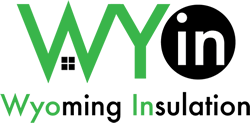Expanding Blown-In Loosefill Fiberglass Insulation by Owens Corning is designed for application in attics of new and existing homes.

Fiber glass insulation does not cause corrosion of metal objects or damage to wood or steel framing elements. In order to make proper glass fibers, the composition of molten glass has to be maintained within a very narrow range. Representative insulation materials are tested for fungi resistance and corrosives, and long term storage thickness recovery on a routine basis.
The Fiber Glass insulation materials thereby maintain their resistance to moisture damage and do not support biological and bacterial growth.
Owens Corning fiber glass insulation products are clearly labelled by R-value. Those values are based on tests made by accredited laboratories using current American Society for Testing and Materials (ASTM) methods. Furthermore, fiber glass batt and loose fill insulation’s are factory-engineered to retain their thermal performance for the lifetime of the product. Properly installed, they will not significantly sag or settle, thereby assuring that the installed R-value is maintained. (Tests done on fiber glass insulation from a 40-year-old building in Ohio confirmed that, despite the age of the material, the fiber glass insulation had retained its original thermal performance.) Fiber glass batts and properly installed loose-fill insulation’s are not significantly affected by convection (the upward movement of warm air). The Canadian insulation standard has incorporated minimum thermal resistivity requirements for batts and loose-fill insulation which restricts the design of loose-fill insulation’s and ensure suitable performance even in extremely cold weather environments.
Dry Cellulose
Dry cellulose is used in retrofitting old homes by blowing the cellulose into holes drilled into the tops of the walls. It can also be blown into a new wall construction by using temporary retainers or netting that is clamped in place then removed once the cellulose has reached the appropriate density. This form of application does settle as much as 20% but the stated R-value of the cellulose is accurate after settling occurs. In addition, a dense-pack option can be used to reduce settling and further minimize air gaps. Dense-pack places pressure on the cavity, and should be done by an experienced installer.
Loose fill in walls is an antiquated technique of using cellulose in wall cavities. The home performance industry and its accrediting bodies support the dense-pack standard of insulating wall cavities, which does not settle. This method stops the stack effect and convective loops in wall cavities.
Spray-applied cellulose
Spray-applied cellulose is used for applying cellulose to new wall construction. The differences are the addition of water to the cellulose while spraying as well as adding some kind of moisture retardant such as chlorine to prevent mold cultures. In some cases the insulation might also mix in a very small percentage of adhesive or activate a dry adhesive present in the cellulose. Wet-spray allows application without the need for a temporary retainer. In addition, wet-spray allows for an even better seal of the insulated cavity against air infiltration and eliminates settling problems. Wet-spray installation requires that the wall be allowed to dry for a minimum of 24 hours (or until maximum of 25% moisture is reached) before being covered.
